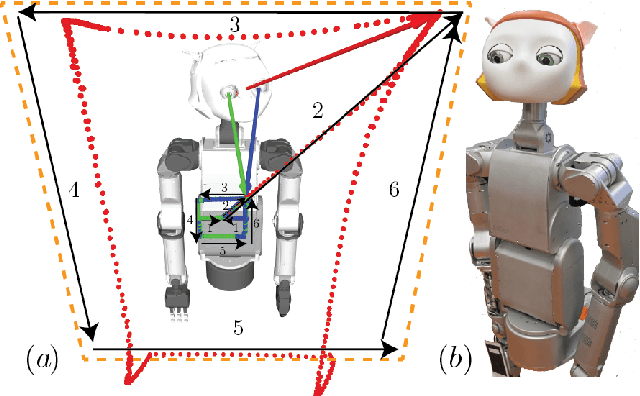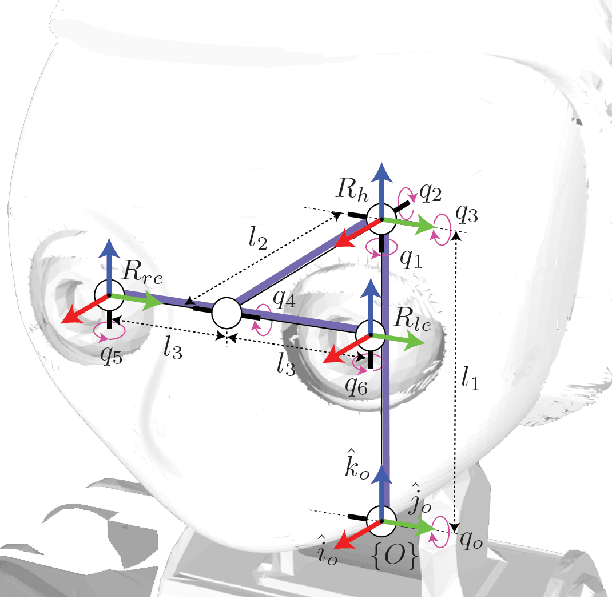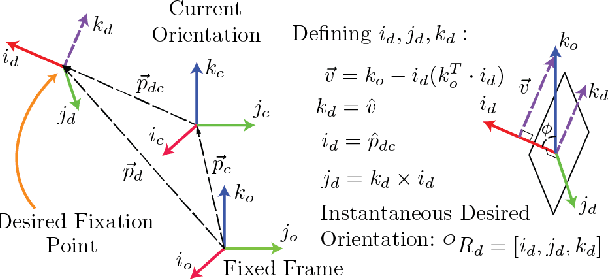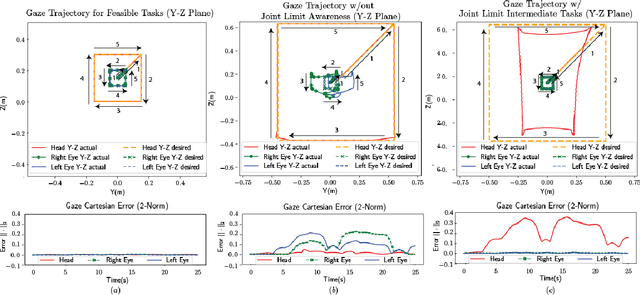Prioritized Kinematic Control of Joint-Constrained Head-Eye Robots using the Intermediate Value Approach
Paper and Code
Sep 24, 2018



Existing gaze controllers for head-eye robots can only handle single fixation points. Here, a generic controller for head-eye robots capable of executing simultaneous and prioritized fixation trajectories in Cartesian space is presented. This enables the specification of multiple operational-space behaviors with priority such that the execution of a low priority head orientation task does not disturb the satisfaction of a higher prioritized eye gaze task. Through our approach, the head-eye robot inherently gains the biomimetic vestibulo-ocular reflex (VOR), which is the ability of gaze stabilization under self generated movements. The described controller utilizes recursive null space projections to encode joint limit constraints and task priorities. To handle the solution discontinuity that occurs when joint limit tasks are inserted or removed as a constraint, the Intermediate Desired Value (IDV) approach is applied. Experimental validation of the controller's properties is demonstrated with the Dreamer humanoid robot. Our contribution is on (1) the formulation of a desired gaze task as an operational space orientation task, (2) the application details of the IDV approach for the prioritized head-eye robot controller that can handle intermediate joint constraints, and (3) a minimum-jerk specification for behavior and trajectory generation in Cartesian space.
 Add to Chrome
Add to Chrome Add to Firefox
Add to Firefox Add to Edge
Add to Edge